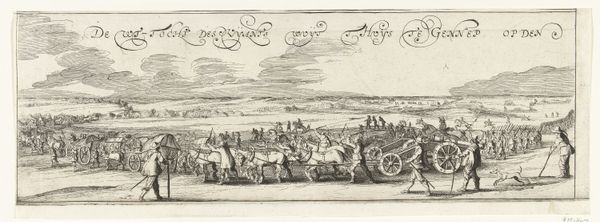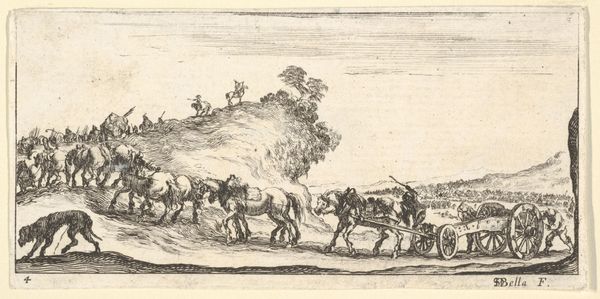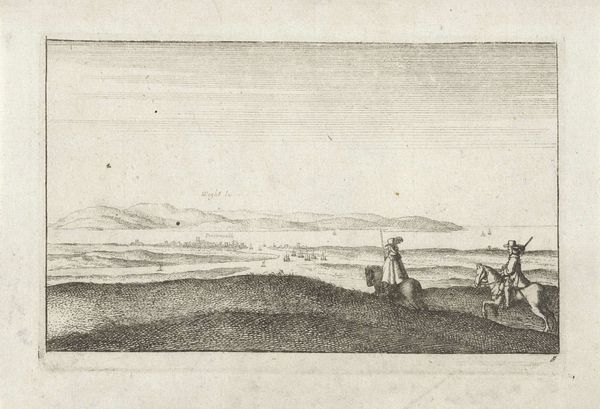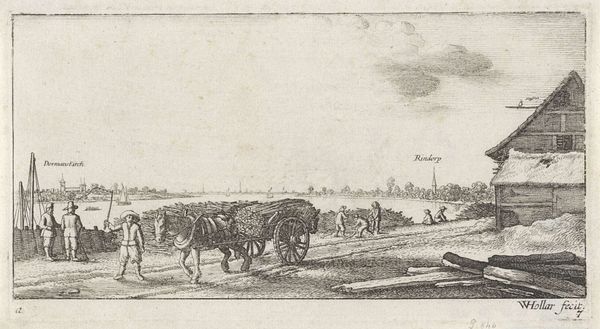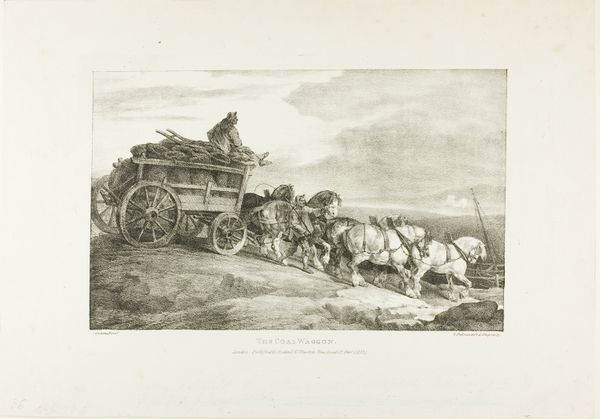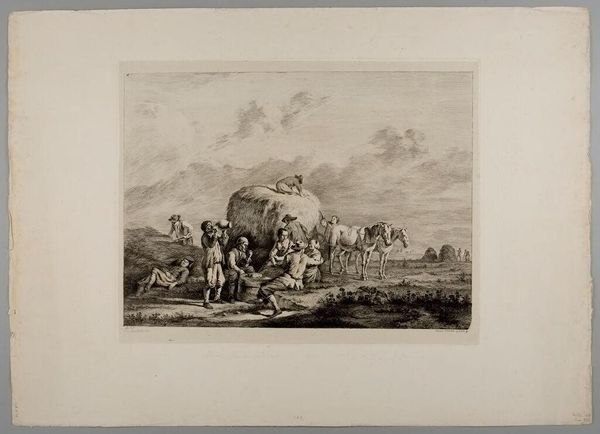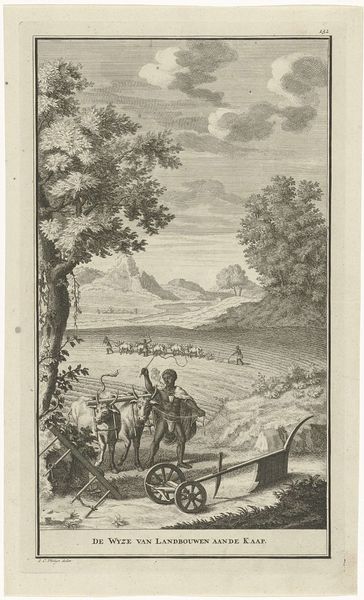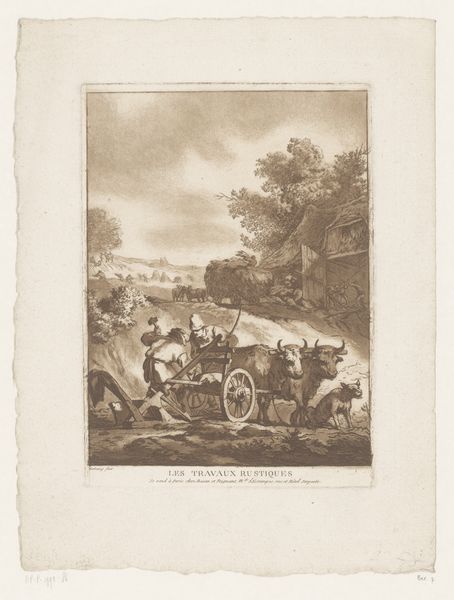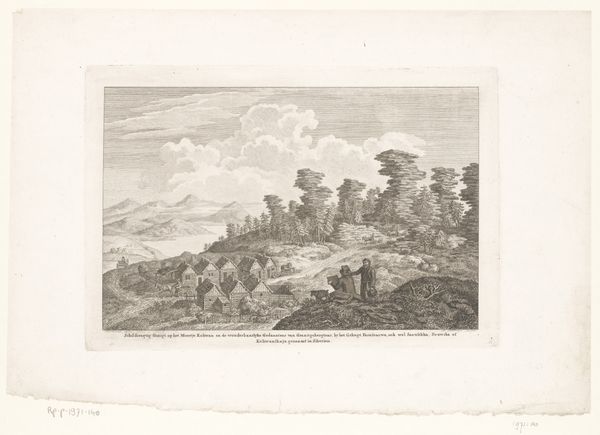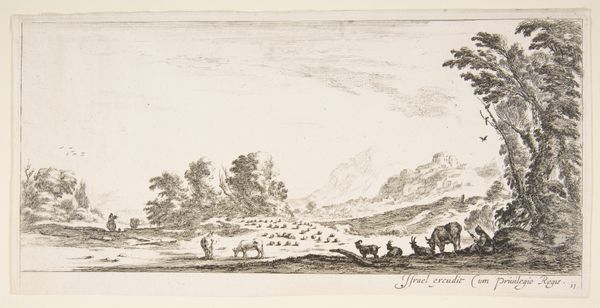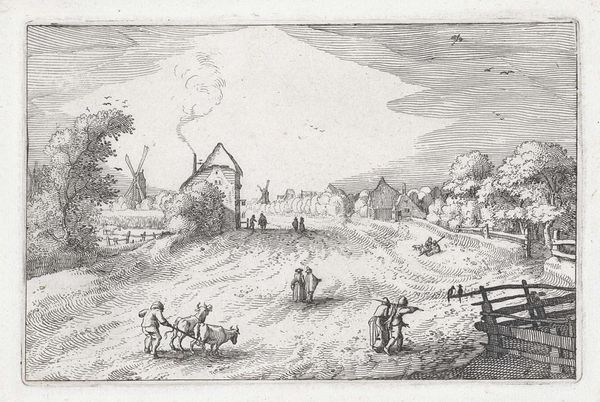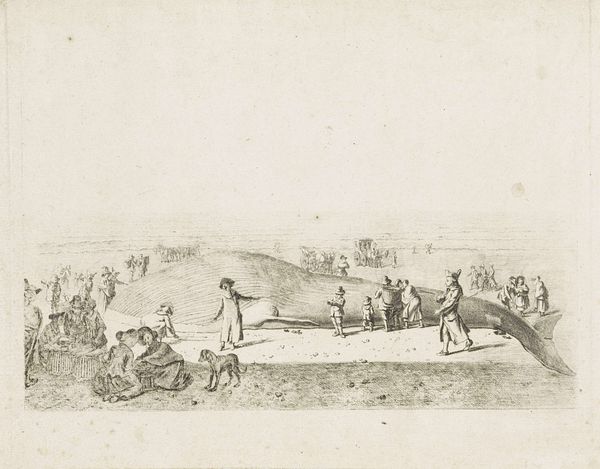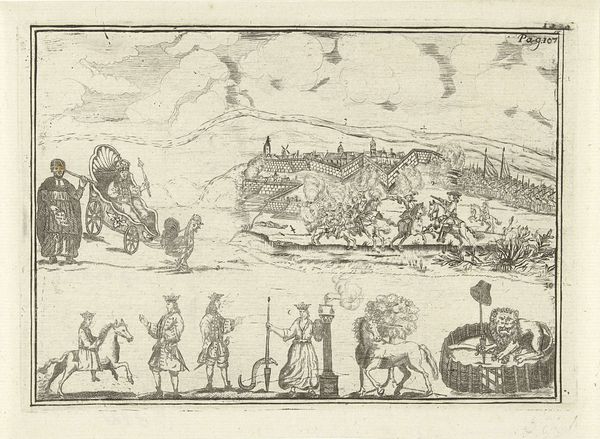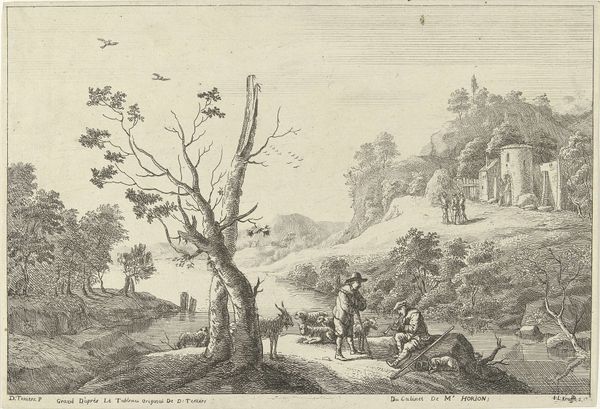
print, etching
#
baroque
# print
#
etching
#
caricature
#
landscape
#
genre-painting
Dimensions: height 155 mm, width 223 mm
Copyright: Rijks Museum: Open Domain
Editor: This etching by Cornelis Meijer, called "Zonder paarden rijdende koets" or "Carriage without horses" from 1696, strikes me as quite bizarre and fantastical. The composition is odd with two separate wheeled mechanisms! What’s your take on this strange contraption? Curator: Initially, one observes the graphic articulation of line which describes both wheeled conveyances within a relatively shallow pictorial space. The contrast in scale, coupled with the division of labor between the two ‘carriages’, is curious. Can you describe the visual relationship between the landscape and the primary subject? Editor: The landscape seems secondary, almost a stage for this curious machine. It's a simple, rolling terrain, created through rather delicate hatching. Is the simplicity of the landscape there to highlight the elaborate details of the carriages themselves? Curator: Precisely. The reduction of depth serves to foreground the geometries and mechanics of the coach and smaller cart. Observe the etching technique: How does the artist deploy line and tonal variation to differentiate between the two conveyances? Consider the density of the lines, and how they create the illusion of three-dimensionality, or perhaps intentionally undermine it. Editor: The lead mechanism has far fewer lines, creating a skeletal look, while the figures on the back are much more shaded giving them a level of pompous weight! So, the relationship and tension between the landscape and the carriage underscore the mechanics and social commentary Meijer is trying to express? Curator: Indeed. It is an engagement with the technological marvels, while seemingly mocking their practicality. The linear perspective, or lack thereof, plays a crucial role in accentuating this inherent tension between the real, implied by the landscape, and the absurd, embodied by the carriages. Editor: It's incredible how analyzing these structural elements illuminates the piece’s underlying critique. I will certainly have to approach other works of art armed with visual-structural awareness now. Thanks. Curator: Indeed. By isolating constituent parts of the whole – be they line, perspective, or spatial compression – we access previously unconsidered interpretative frameworks.
Comments
No comments
Be the first to comment and join the conversation on the ultimate creative platform.
